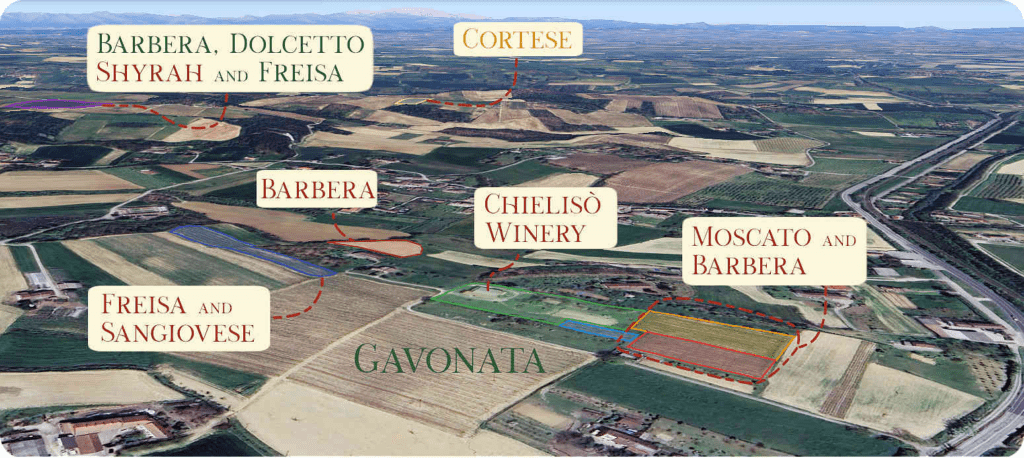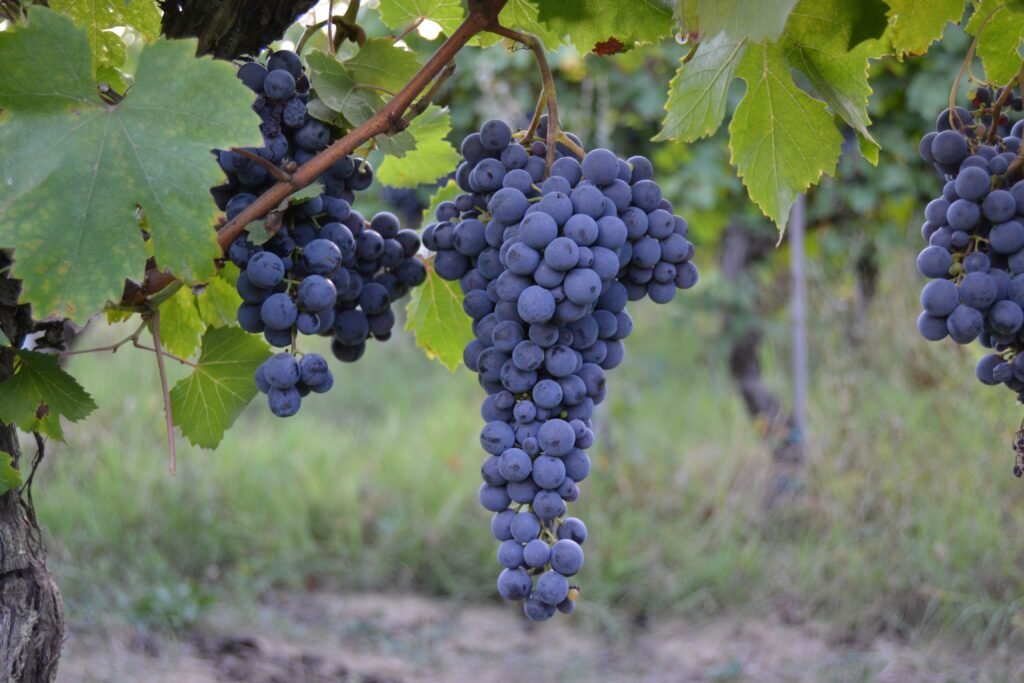Vineyards


Most of our vineyards are located in the natural preservation area of Piedmont Region “Bosco delle Sorti – La Communa,” a protected area since 2001. This forest’s origin dates back to the early 1400s when the Marquises of Monferrato granted 260 hectares to the Cassine community. The area was divided into seven districts for woodcutting, further subdivided into lots. Today, the protected area spans 1819 hectares, featuring hills, vineyards, and 300 hectares of forest.


Barbera del Monferrato
We primarily cultivate Barbera del Monferrato, divided into two plots: one of about 0.75 hectares planted in 2004 on the Gavonatese plateau known as “Gnola,” and another 0.4-hectare plot planted in 2014 near the winery. We use these grape varieties for the production of our Barbera del Monferrato D.O.C..
Barbera, first mentioned in 1798, is a robust grape known for its high alcohol content and rich color. Historically, it was not vinified alone but mixed with other grapes. By the early 1800s, Barbera was recognized as originating from Monferrato, solidifying its place in winemaking literature.
dolcetto d’acqui
Our Dolcetto d’Acqui vineyard borders the Barbera plot on the Gnola plateau, covers 0.48 hectares, and was planted in 2003. From this grape variety, we obtain our Dolcetto d’Acqui D.O.C..
Dolcetto, a typical Piedmontese grape, was first documented in the late 1700s and is believed to have originated in Monferrato. It’s primarily found in the Langhe, Monferrato, and Asti hills. Despite its name suggesting sweetness, the wine is dry and slightly bitter. The name might come from the dialect word “dusset” (hilltop) or the grape’s less acidic, sweeter pulp. This grape thrives in specific conditions and may not adapt well even a few kilometers away.




monferrato freisa
Our Monferrato Freisa vineyards are split between the Gnola plain, planted in 1992, and a plot near the winery, planted in 2008. We use this grape variety for the production of our Monferrato Chiaretto D.O.C..
Freisa is an indigenous black grape from Piedmont, documented since the 1500s in references to a prized wine called “Fresearum.” It’s vigorous, long-lived, and disease-resistant. When vinified with skin contact, it produces a dry, tannic wine that ages well. Its versatility allows for white vinification, resulting in sweet sparkling or rosé wines.
Cortese dell’Alto Monferrato
We also cultivate Cortese dell’Alto Monferrato on a second plateau in Gavonata, named “Pania“, one of the seven districts of Bosco delle Sorti. This indigenous grape originated in the Alessandria-Tortona area. From this grape variety, we obtain our Cortese dell’Alto Monferrato D.O.C..
This indigenous grape originated in the Alessandria-Tortona area. The name “Cortese,” meaning “courteous,” is said to derive from the beauty and grace of Princess Gavia, daughter of King Clodomiro of the Franks. Officially recognized as an excellent grape variety in 1659, the straw-yellow Cortese wine is pleasantly acidic, dry, and fresh, making it perfect for appetizers, fish, and risottos.




Moscato Bianco
The origins of Moscato date back to ancient times. In Piedmont, the earliest documents mentioning Moscato are from 1257, referencing a vineyard in Strevi, and again in a donation by Bishop Guido to Acqui Terme. By 1297, records of Moscato vineyards in Canelli appear.
Cultivated mainly on the gentle hills between the Tanaro and Bormida valleys, Moscato is known for its aromatic and fragrant grapes. This versatile variety can produce various products, including partially fermented must, Moscato Spumante, and sweet Moscato passito wines.
Syrah
Syrah, also known as Shiraz or Syrac, is a black grape variety considered a “world grape” due to its widespread cultivation. Its origins are debated; it may come from ancient Persia near Shiraz or from Syracousai (Syracuse), brought by Emperor Marcus Aurelius Probus in the 3rd century.
We planted 2300 sqm of Syrah in 2012, recognizing its disease resistance. Known for its high polyphenol and tannin content, Syrah is robust and great for aging. Since 2020, we’ve been producing a sulfite-free, steel-fermented Syrah, appreciated by many.

